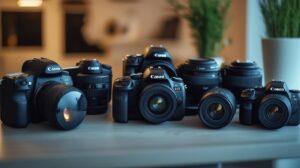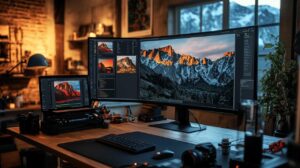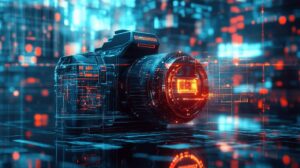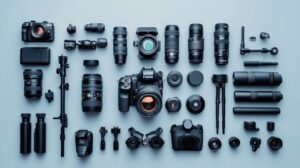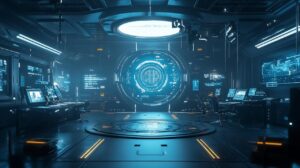Understanding low-light photography challenges
The world of photography transforms dramatically once the sun begins to set. The golden and blue hours offer some of the most magical lighting conditions, but they also present unique challenges that test even the most advanced camera systems. Photographers seeking to capture the essence of twilight need equipment specifically designed to perform when light becomes scarce. This is where understanding the technical aspects behind low-light photography becomes crucial for anyone looking to master night shots in 2025.
The science behind ISO sensitivity and noise reduction
At the heart of low-light photography lies ISO sensitivity—a fundamental element that determines how responsive your camera's sensor is to available light. Modern digital cameras have made remarkable advances in this area, with models like the Sony A7 IV offering an impressive ISO range of 100-51,200 that can be expanded even further. What makes today's cameras truly exceptional for night photography is not just their ability to reach astronomical ISO numbers, but how they manage the digital noise that traditionally plagued high-sensitivity settings. The latest processors employ sophisticated algorithms that can distinguish between actual image detail and unwanted noise, preserving clarity even in challenging conditions.
Why twilight hours demand special camera capabilities
The transition from day to night creates uniquely challenging lighting scenarios. During these moments, the dynamic range—the ability to capture both shadows and highlights in a single frame—becomes critically important. Full-frame sensors excel here, offering superior light-gathering capabilities compared to their smaller counterparts. The twilight hours also introduce issues like colour accuracy challenges and slower shutter speeds, making image stabilisation technology an essential feature rather than a luxury. Whether you're capturing the urban landscape of Carmarthen or the rugged Welsh coastline at dusk, these special capabilities make the difference between a muddy, grainy disappointment and a breathtaking low-light masterpiece.
Entry-level marvels for night photography beginners
Breaking into night photography doesn't necessarily require remortgaging your house. Several camera manufacturers now offer surprisingly capable models that perform admirably in low light without breaking the bank. These entry-level options make twilight photography accessible to enthusiasts who are just discovering the magic of shooting after sunset but aren't ready for professional-grade investments.
Budget-friendly models with impressive low-light performance
The Canon EOS RP stands out as a remarkable value proposition, offering a 26.2MP full-frame sensor with ISO capabilities extending to 40,000—quite impressive for its price point. This model demonstrates how the technology once reserved for flagship cameras has trickled down to more affordable options. Similarly, the Fujifilm X-T5 with its 40MP APS-C sensor proves that you don't necessarily need a full-frame camera to achieve excellent results in challenging light. Its ISO range of 125-12,800 might seem modest compared to some full-frame monsters, but Fujifilm's renowned colour science and noise handling algorithms deliver stunning night images. These cameras represent excellent starting points for photographers wanting to explore long exposures and manual controls without investing thousands in their first serious camera system.
Key features to look for when you're just starting out
When selecting your first low-light capable camera, prioritise models with effective in-body image stabilisation systems. This technology allows you to shoot at slower shutter speeds without introducing motion blur, effectively giving you 2-5 stops of additional light gathering ability. RAW file capability is another non-negotiable feature, as these uncompressed files retain significantly more information in shadows and highlights—critical when editing night photographs. Look for cameras with intuitive manual controls that allow you to quickly adjust settings in changing light conditions, and consider the native lens options available, as even the best camera body needs quality glass to reach its potential. Many beginners overlook these aspects, focusing solely on megapixel counts and maximum ISO values, which rarely tell the complete story of low-light performance.
Professional-grade cameras worth the investment
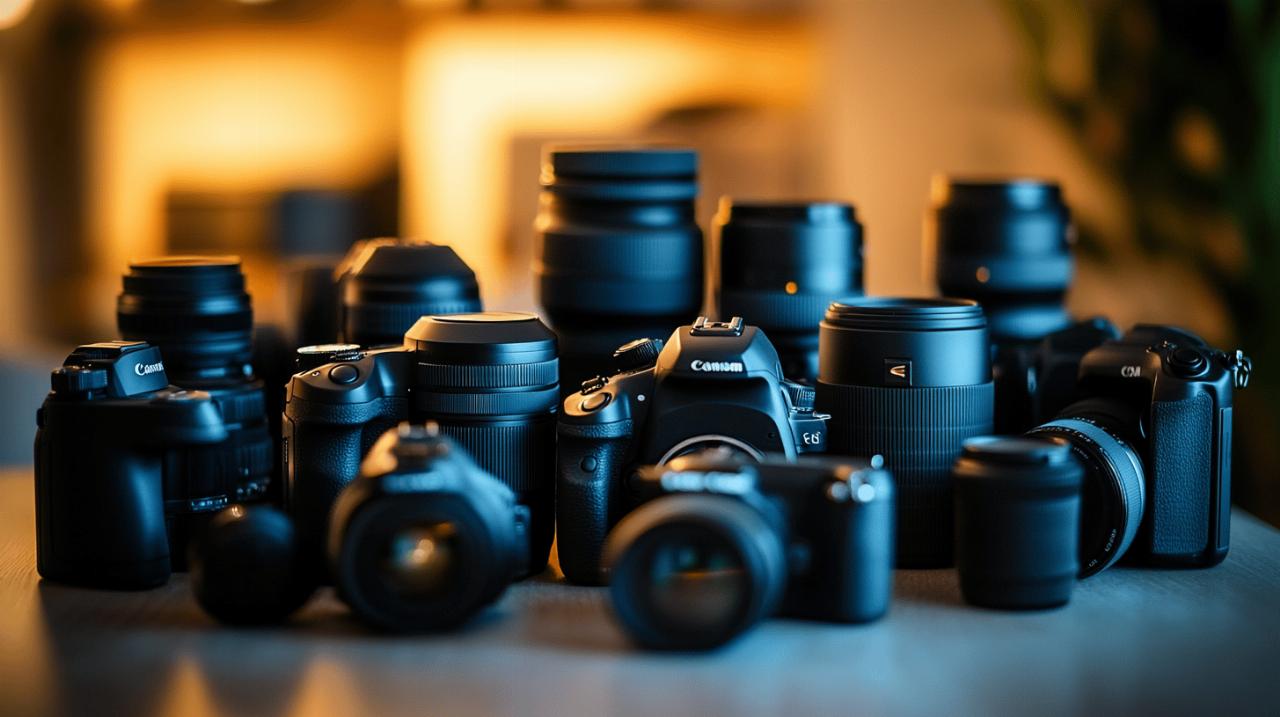 For serious photographers who regularly work in challenging lighting conditions, investing in professional-grade equipment becomes less of a luxury and more of a necessity. These high-end systems offer capabilities that can transform impossible shooting scenarios into opportunities for creating remarkable images, particularly during the twilight hours when light is at its most dramatic and most challenging.
For serious photographers who regularly work in challenging lighting conditions, investing in professional-grade equipment becomes less of a luxury and more of a necessity. These high-end systems offer capabilities that can transform impossible shooting scenarios into opportunities for creating remarkable images, particularly during the twilight hours when light is at its most dramatic and most challenging.
Full-frame sensors and their advantage in darkness
The physics behind full-frame superiority in low light is straightforward—larger pixels capture more photons. The Sony A7S III exemplifies this principle with its modest 12MP resolution spread across a full-frame sensor, resulting in exceptionally large individual pixels. This design choice gives it an astounding ISO range reaching 409,600, making it capable of virtually seeing in the dark. The Nikon Z6 II takes a different approach, balancing a 24.5MP resolution with excellent noise control up to ISO 51,200. These cameras demonstrate how sensor size significantly impacts low-light performance, with full-frame models consistently outperforming smaller sensors when shooting in darkness. The larger surface area collects more light overall, resulting in cleaner images with better colour reproduction and dynamic range when shooting everything from cityscapes to astrophotography.
Comparing flagship models from leading manufacturers
The battle for low-light supremacy among manufacturers has pushed camera technology forward at an impressive pace. The Canon EOS R6 Mark II stands out with its remarkable autofocus system that continues to function reliably even in near-darkness, coupled with ISO capabilities extending to 102,400. Sony maintains its reputation for sensor innovation with the A7 IV, offering exceptional dynamic range that preserves both shadow and highlight detail in challenging twilight situations. Meanwhile, the Panasonic Lumix GH6 proves that even Micro Four Thirds systems can deliver impressive low-light results through computational photography techniques, despite its smaller sensor size. Each system offers unique advantages for night photography enthusiasts, from Canon's colour rendering to Sony's dynamic range and Nikon's noise control algorithms, making the choice increasingly dependent on specific shooting needs rather than absolute technical superiority.
Beyond the Camera Body: Essential Accessories for Twilight Shooting
Even the most advanced low-light camera can't reach its full potential without the right supporting equipment. Serious night photography requires thoughtful accessorising to maximise those impressive ISO capabilities and ensure you capture crisp, detailed images when light is minimal.
Lenses that excel in minimal lighting conditions
Fast lenses with wide maximum apertures are the perfect companions for low-light cameras. A lens with an f/1.4 or f/1.8 aperture allows substantially more light to reach the sensor than standard kit lenses, effectively giving you 2-3 stops of additional light gathering ability. This means you can keep your ISO lower while maintaining faster shutter speeds. Prime lenses typically offer these wider apertures at more affordable prices than zooms, making them popular choices for night photography enthusiasts. When shopping at UK dealers like Carmarthen Camera Centre, consider investing in a quality 50mm or 35mm prime as your first dedicated low-light lens. These focal lengths provide versatility for various night photography scenarios, from street scenes to environmental portraits, while their optical simplicity often results in exceptional sharpness even when shooting wide open in challenging conditions.
Stabilisation tools to complement your camera's ISO capabilities
No discussion of twilight photography equipment would be complete without mentioning the humble tripod—perhaps the most important accessory for serious night photography. A solid, stable tripod effectively eliminates the need for extremely high ISO values when shooting static subjects, allowing for longer exposures at base ISO for maximum image quality. Modern carbon fibre options offer an excellent balance of weight and stability, making them practical for photographers who need to trek to remote locations for the perfect twilight shot. Beyond tripods, consider investing in a remote shutter release to eliminate vibrations during long exposures, and neutral density filters that enable creative long exposure effects even during blue hour. These accessories work in concert with your camera's capabilities, allowing you to capture images with minimal noise and maximum detail, regardless of how challenging the lighting conditions become.

